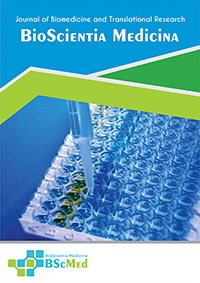Main Article Content
Abstract
Background: Esophageal food bolus impaction is a common otolaryngological emergency. However, impaction by a large, whole citrus fruit is exceedingly rare and presents unique diagnostic and therapeutic challenges, particularly concerning the object's size, radiolucency, and potential for causing both mechanical and chemical mucosal injury.
Case presentation: We present the case of a 42-year-old male with acute-onset dysphagia and hypersalivation after ingesting a whole kaffir lime. Laryngoscopy revealed pooled secretions in the pyriform sinus, a key indicator of high esophageal obstruction, despite non-contributory plain radiography. The patient underwent emergent rigid esophagoscopy under general anesthesia. A 36 mm kaffir lime was identified at 15 cm from the incisors and successfully extracted en bloc using alligator grasping forceps. Post-extraction evaluation revealed localized mucosal excoriation without evidence of deep laceration or perforation. The patient recovered fully with no long-term sequelae.
Conclusion: This case highlights the successful management of a rare and challenging esophageal foreign body. It underscores the diagnostic primacy of clinical findings over negative radiography for radiolucent objects and demonstrates the distinct advantages of rigid esophagoscopy—superior airway control, a wider operating channel, and use of robust instrumentation—for large, solid foreign bodies lodged in the proximal esophagus. In this instance, the impaction did not lead to severe complications within 24 hours, but prompt removal is essential to mitigate the risks of pressure necrosis and chemical esophagitis.
Keywords
Article Details
As our aim is to disseminate original research article, hence the publishing right is a necessary one. The publishing right is needed in order to reach the agreement between the author and publisher. As the journal is fully open access, the authors will sign an exclusive license agreement.
The authors have the right to:
- Share their article in the same ways permitted to third parties under the relevant user license.
- Retain copyright, patent, trademark and other intellectual property rights including research data.
- Proper attribution and credit for the published work.
For the open access article, the publisher is granted to the following right.
- The non-exclusive right to publish the article and grant right to others.
- For the published article, the publisher applied for the Creative Commons Attribution-NonCommercial-ShareAlike 4.0 International License.





